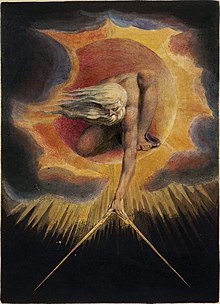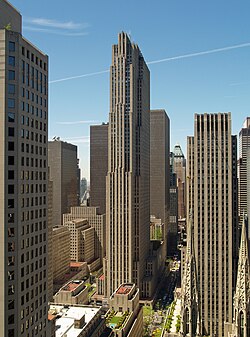Sagrada Família’s underground mausoleum – Completed in 1981 and built in the neo-Gothic style, Sagrada Família’s crypt has 12 chapels. It houses Gaudí’s tomb at the base of a statue of the Holy Virgin of Mount Carmel.

A crypt was literally a “hidden” space – The English word “crypt” comes from the Latin crypta, which came from the Greek kryptē, the feminine of kryptos, meaning “hidden.”
Gaudí’s playful “leaning crypt” – This refers to a church designed by Gaudí in Colònia Güell, an industrial village in Santa Coloma de Cervelló, a town 23 km (about 14.3 miles) southwest of Barcelona. Although the church was originally intended to be larger, due to lack of funding only the crypt was constructed. In this crypt, Gaudí first employed a variety of his signature architectural motifs, including catenary arches, mosaic tiling called trencadís, parabolic-shaped walls, and blending of his architecture with the natural environment.

neo-Gothic chamber – The neo-Gothic (also known as Gothic Revival or Victorian Gothic) architectural movement began in 1740s England. It imitates traditional Gothic architecture of the Middle Ages, including motifs such as decorations, finials, scalloping, and lancet windows. Neo-Gothic architecture can be found in a variety of locations in North America and Europe, including on the campuses of Princeton University, Bryn Mawr College, the University of Pennsylvania, Washington University in St. Louis, and Yale University.

an unassuming gray slab – Gaudí was buried on June 12, 1926, in the chapel of Our Lady of Mount Carmel in Sagrada Família’s crypt. On his gravestone is written in Latin, “Antoni Gaudí Cornet. From Reus. At the age of 74, a man of exemplary life, and an extraordinary craftsman, the author of this marvelous work, the church, died piously in Barcelona on the tenth day of June 1926; henceforward the ashes of so great a man await the resurrection of the dead. May he rest in peace.”
plinth – the base or platform for a statue, pedestal, column, monument, or other such structure.

the Greek letter lambda – Lambda (uppercase, lowercase: Λ, λ) is the 11th letter of the Greek alphabet and is used for a variety of purposes in science and mathematics, such as wavelength.
Mount Carmel – the headland (a type of promontory) at the northwestern end of the northern Israeli coastal mountain range known as the Carmel range. Mount Carmel has been seen as a sacred place since potentially as early as the 1400s BCE.
Carmelite cross – The Carmelites, formally The Order of the Brothers of the Blessed Virgin Mary of Mount Carmel, are a Roman Catholic religious order founded on Mount Carmel, probably in the 1100s. The Order was founded by a group of hermits, likely in dedication to the Blessed Virgin Mary. Life for members of the Order, which includes friars, nuns, and laypeople, centers around prayer, community, and service. Some forms of the Carmelite shield, such as the one pictured below, which represents the Discalced Carmelites (one branch of the Order), include what Langdon refers to as a “Carmelite cross.”
Blessed Virgin Mary of Mount Carmel – As patron saint of the Carmelites, the Blessed Virgin Mary received the title of Our Lady of Mount Carmel. Our Lady of Mount Carmel has also been Chile’s patron saint since the 1800s, and her liturgical feast occurs on July 16.
The Ancient of Days – a 1794 watercolor etching by William Blake depicting Urizen (see below), of which 13 copies exist. Blake originally used it opposite the title page in his 1794 book Europe a Prophecy. The image was later used for the cover of Stephen Hawking’s 2005 book God Created the Integers (see below).

Editor: Maja Cannavo

The Book of Urizen is one of the major prophetic books of the English writer, William Blake.
Urizen is a character in the book, depicted as the embodiment of conventional reason and law. He is usually depicted as a bearded old, white man (picture on left).
He is depicted as a godlike figure, and Blake believed him to be the true deity worshiped by his contemporaries.

Stephen William Hawking is an English theoretical physicist and cosmologist.
At 21, he was diagnosed with the ALS disease.
http://www.hawking.org.uk/

God Created the Integers: The Mathematical Breakthroughs That Changed History is an anthology, edited by Stephen Hawking, of “excerpts from thirty-one of the most important works in the history of mathematics.”
The cover art is William Blake’s famous 1794 watercolor etching The Ancient of Days, portraying Urizen.
The Rockefeller Center is a large complex consisting of 19 commercial buildings covering 22 acres between 48th and 51st Streets in New York City.

A sculpture featured above the entrance to 30 Rockefeller Plaza in the Rockefeller Center in New York City.
The sculpture depicts Blake’s Urizen.
Blake’s most famous poem
The refers to William Blake’s poem The Tyger:
“The Tyger”
Tyger Tyger, burning bright,
In the forests of the night;
What immortal hand or eye,
Could frame thy fearful symmetry?In what distant deeps or skies.
Burnt the fire of thine eyes?
On what wings dare he aspire?
What the hand, dare seize the fire?And what shoulder, & what art,
Could twist the sinews of thy heart?
And when thy heart began to beat,
What dread hand? & what dread feet?What the hammer? what the chain,
In what furnace was thy brain?
What the anvil? what dread grasp,
Dare its deadly terrors clasp!When the stars threw down their spears
And water’d heaven with their tears:
Did he smile his work to see?
Did he who made the Lamb make thee?Tyger Tyger burning bright,
In the forests of the night:
What immortal hand or eye,
Dare frame thy fearful symmetry?
Editor: Musab


